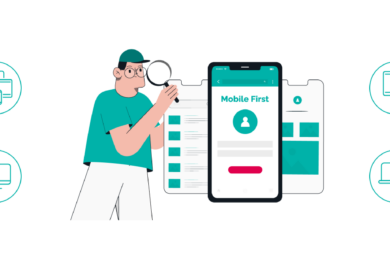
User feedback is a valuable source of insights that can inform and guide the web design process. By actively soliciting and analyzing feedback from users, designers can gain valuable insights into how their audience perceives and interacts with their website, identify areas for improvement, and ultimately create a more user-centric and effective design. In this article, we’ll explore the importance of user feedback in web design and discuss strategies for effectively utilizing feedback to improve the design of your website.
Importance of User Feedback in Web Design
User feedback plays a crucial role in shaping the user experience and overall effectiveness of a website. Here are some key reasons why user feedback is essential in web design:
1. Insight into User Needs and Preferences
User feedback provides valuable insights into the needs, preferences, and expectations of your target audience. By understanding how users perceive and interact with your website, designers can tailor the design to better meet their needs and preferences.
2. Identification of Usability Issues
User feedback helps identify usability issues and pain points that may not be immediately apparent to designers. By listening to user feedback, designers can uncover areas of friction or confusion in the user experience and make necessary improvements to enhance usability.
3. Validation of Design Decisions
User feedback serves as a litmus test for design decisions, helping to validate or invalidate assumptions made during the design process. By gathering feedback from real users, designers can ensure that their design decisions are aligned with the needs and preferences of their audience.
4. Continuous Improvement
User feedback fosters a culture of continuous improvement, where designers are constantly iterating and refining the design based on user input. By incorporating user feedback into the design process, designers can create a website that evolves and improves over time to better meet the needs of its users.
Strategies for Utilizing User Feedback in Web Design
1. Collect Feedback Through Multiple Channels
Utilize a variety of channels to collect user feedback, including surveys, feedback forms, user testing sessions, and social media. By casting a wide net and gathering feedback from different sources, you can gain a more comprehensive understanding of your audience’s needs and preferences.
2. Analyze Feedback Systematically
Systematically analyze user feedback to identify common themes, patterns, and trends. Look for recurring issues or suggestions that may indicate areas for improvement in the design. Organize feedback into categories and prioritize them based on their impact on the user experience.
3. Actively Listen to Users
Actively listen to users and demonstrate empathy and understanding when addressing their feedback. Acknowledge their concerns and suggestions, and communicate transparently about how their feedback will be used to improve the design. Showing that you value and appreciate user feedback fosters trust and engagement with your audience.
4. Iterate and Test Design Changes
Based on user feedback, iterate and test design changes to evaluate their impact on the user experience. Implement small, incremental changes and gather feedback from users to assess whether the changes have addressed the issues identified. Iterate based on user feedback until the desired improvements are achieved.
5. Monitor Performance Metrics
Monitor performance metrics, such as bounce rate, time on page, and conversion rate, to gauge the effectiveness of design changes. Use analytics tools to track user behavior and identify areas where users may be encountering obstacles or experiencing friction in the user experience. Use this data to inform further design iterations and improvements.
Conclusion
User feedback is a valuable resource that can inform and guide the web design process, leading to a more user-centric and effective design. By actively soliciting and analyzing feedback from users, designers can gain valuable insights into user needs and preferences, identify usability issues, validate design decisions, and foster a culture of continuous improvement. By incorporating user feedback into the design process, designers can create websites that better meet the needs and expectations of their audience, ultimately leading to a more satisfying and engaging user experience.








